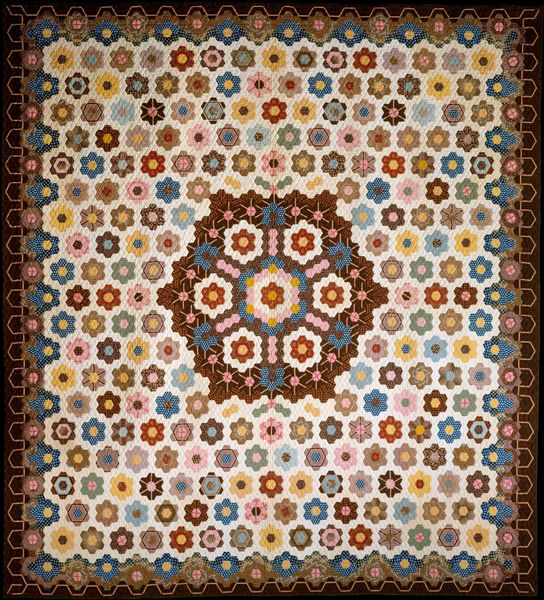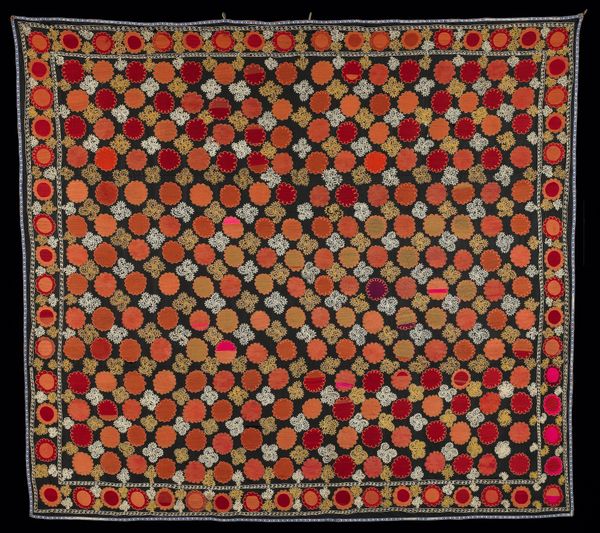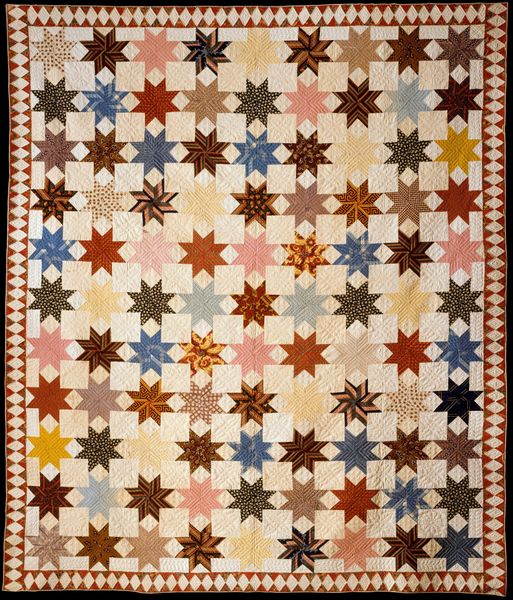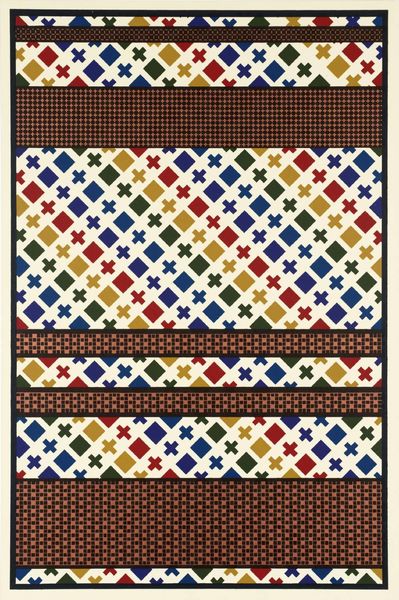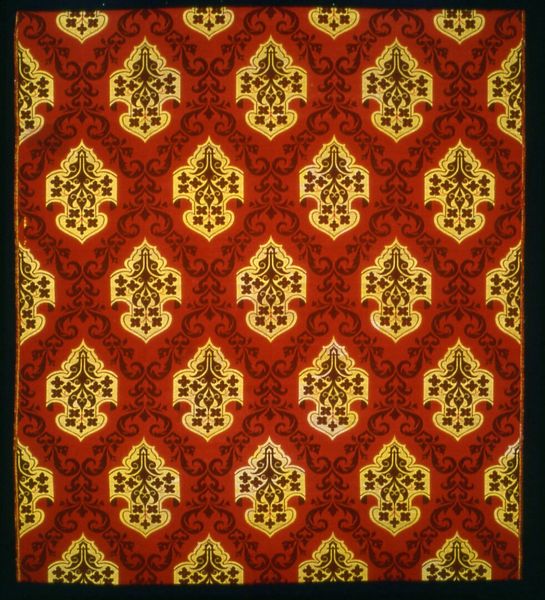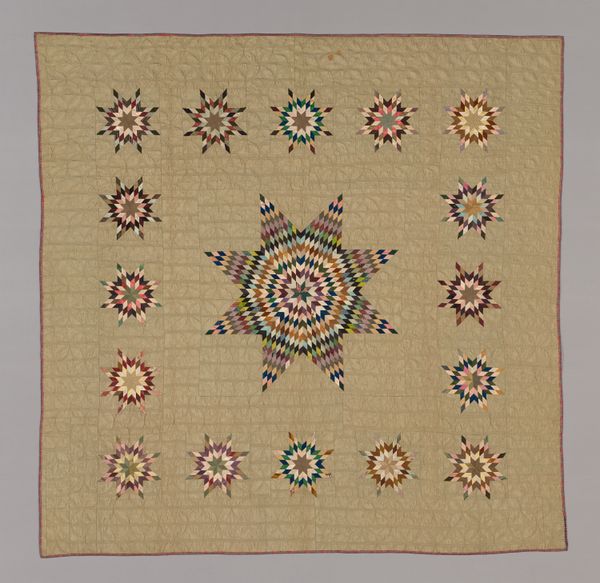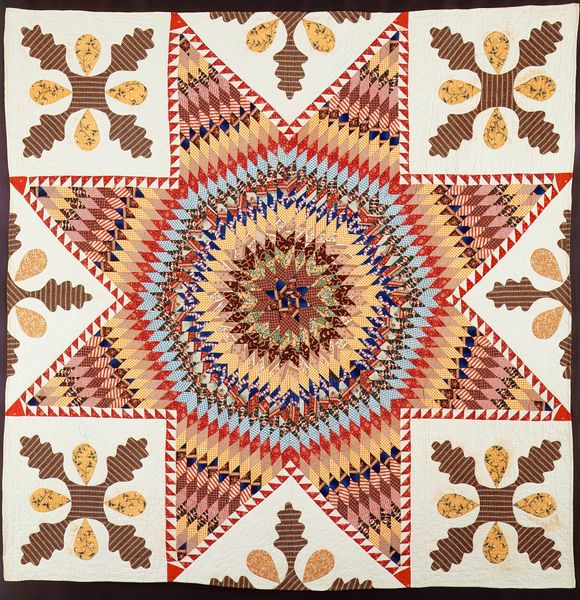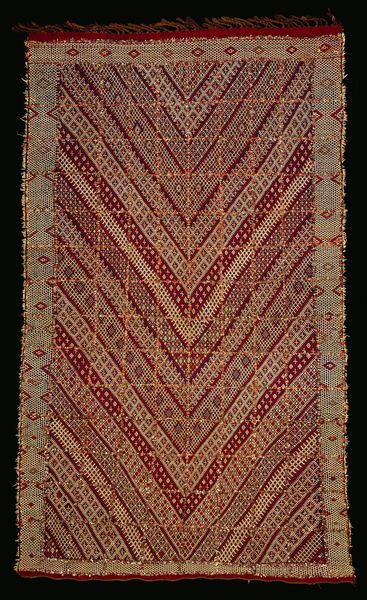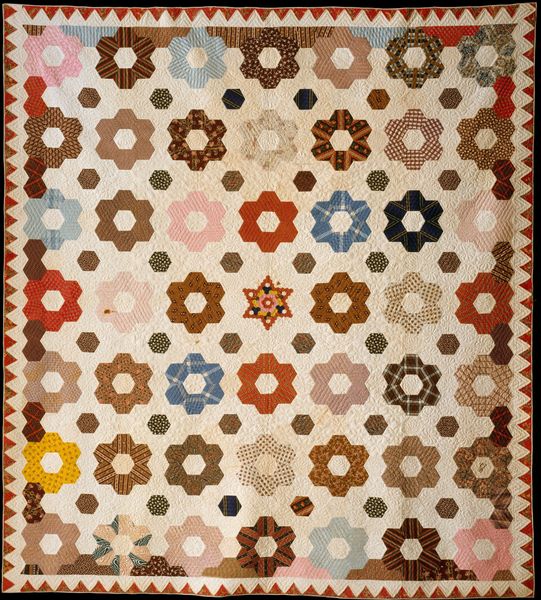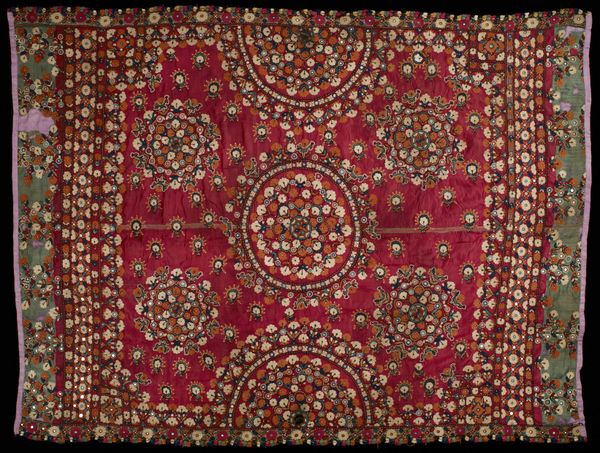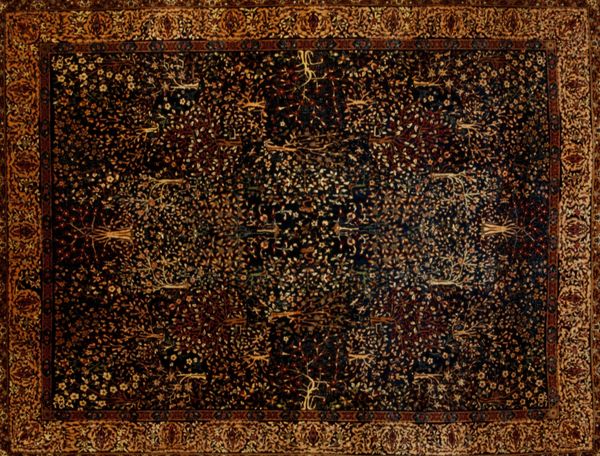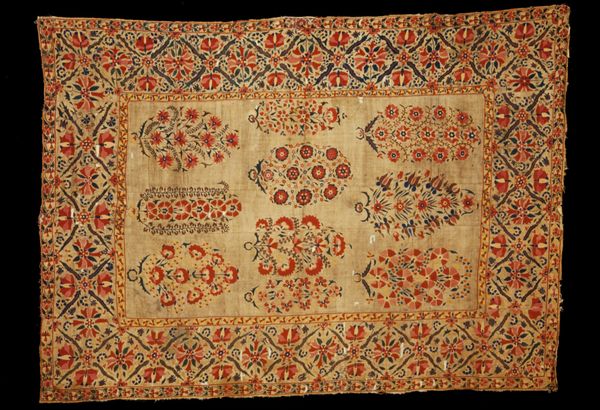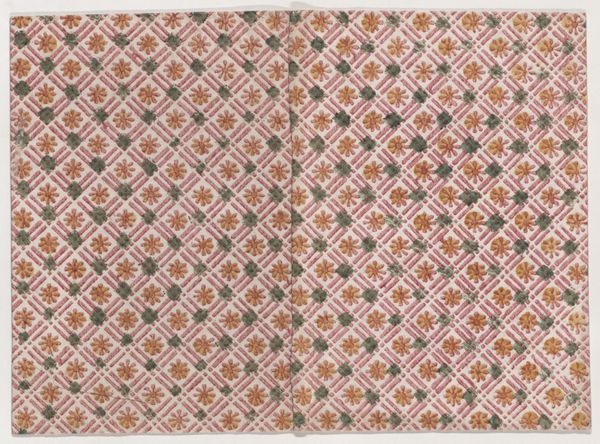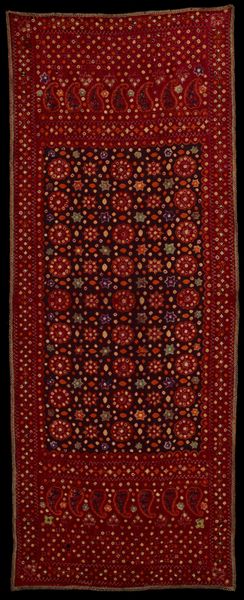
Quilt (or decorative throw). Hexagon or Mosaic pattern 1867 - 1873
0:00
0:00
fibre-art, textile
#
natural stone pattern
#
fibre-art
#
naturalistic pattern
#
textile
#
geometric pattern
#
repetitive shape and pattern
#
organic pattern
#
geometric
#
repetition of pattern
#
vertical pattern
#
pattern repetition
#
decorative-art
#
layered pattern
#
repetitive pattern
Dimensions: 55 x 49 1/8 in. (139.7 x 124.8 cm)
Copyright: Public Domain
Curator: Immediately, I feel the warmth of tradition emanating from this piece, something so intrinsically linked to domestic life. Editor: And look at that careful, meticulous pattern! We’re viewing a quilt, or perhaps a decorative throw, crafted sometime between 1867 and 1873 by Caroline Brooks Gould. The hexagonal or mosaic pattern is really striking. You find it here at the Metropolitan Museum of Art. Curator: Absolutely. Each hexagon acting as a vessel, you see, a carrier of intention and cultural narrative. Those repeated floral patterns…they're not merely decorative. They are potent symbols of growth, life cycles, and the inherent beauty found in the everyday. The repetition echoes a sense of ritual, a daily reaffirmation. Editor: That resonates. Quilts often transcend mere functionality; they function as social documents. They embody the maker's world and, potentially, offer coded political or personal statements readable within a specific community or historical context. It makes you wonder what societal norms might have influenced Ms. Gould and the work she produced. Curator: Precisely. We need to consider the power of shared iconography. These symbols and colors – earth tones mingling with bursts of blue and red– create a powerful visual language accessible across generations. Consider how this echoes pre-literate forms of communication, of telling stories before or beyond the written word. Editor: Though one wonders how its cultural meaning evolved since its inception. What’s fascinating, though, is how we continue to recontextualize textiles like these within contemporary art spaces, challenging historical notions of "high" versus "low" art. How domestic craft can be considered vanguard. Curator: And to see that continuity gives such pieces their powerful presence. Gould’s Quilt resonates so deeply with us precisely because it connects to something fundamentally human and universal. A hope, perhaps, for enduring beauty within a fragile world. Editor: A fascinating point, it reminds us that art history, just like memory, is layered and quilted itself, pieced together by narratives continually re-evaluated over time. Thanks for bringing us that fresh insight.
Comments
No comments
Be the first to comment and join the conversation on the ultimate creative platform.
